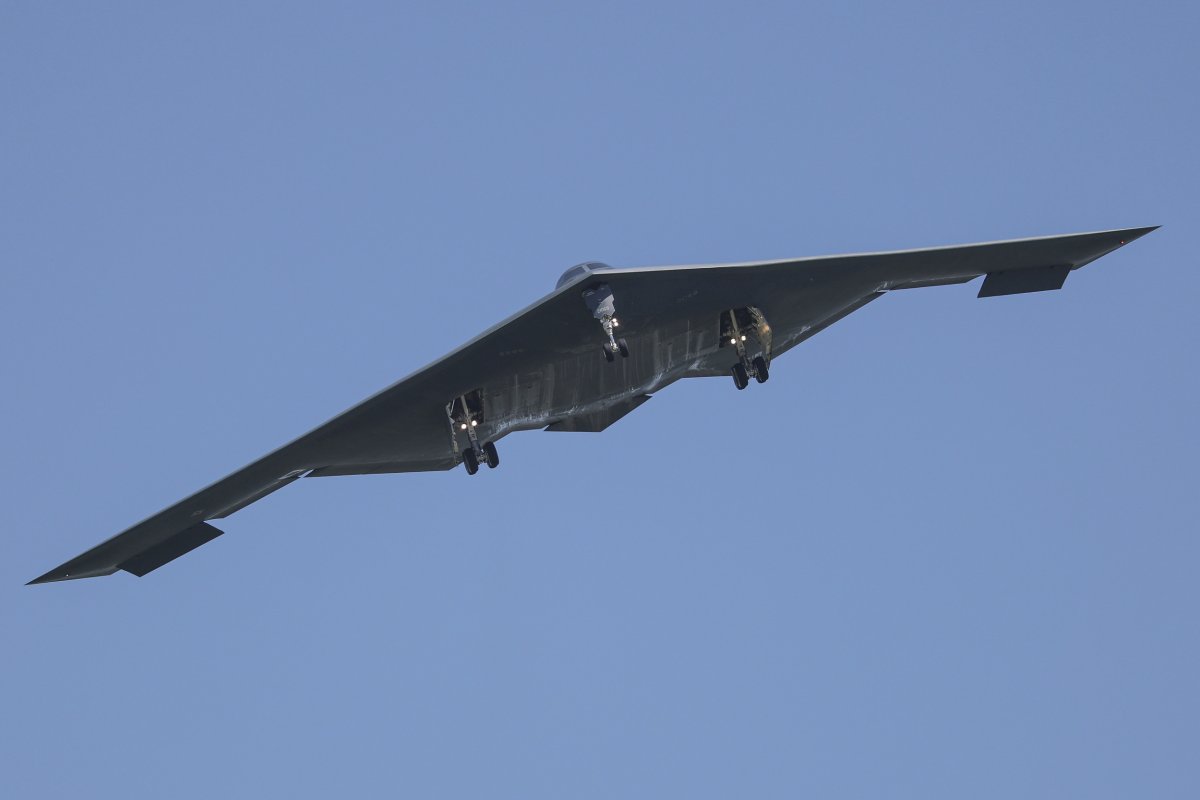In the most ambitious U.S. stealth airstrike in decades, seven B-2 Spirit bombers flew 7,000 miles from Missouri to Iran over the weekend, dropping more than a dozen 30,000-pound bunker-busting bombs on nuclear sites buried deep under rock and reinforced concrete. Codenamed Operation Midnight Hammer, the mission relied on deception, aerial refueling, and near-total radio silence to hit Iran’s Fordo and Natanz enrichment facilities—critical targets that had withstood weeks of sustained Israeli attacks.
Pentagon officials called it a precision strike designed to "devastate" Iran's nuclear infrastructure and showcase America's global reach and resolve.
While the world waits for the damage assessments from these operations, the strike has already served a significant purpose beyond its immediate military objectives: it has demonstrated, in no uncertain terms, that high-end, manned stealth aircraft like the B-2 remain indispensable for missions that require long-range precision, stealth, and the ability to breach the most sophisticated air defense systems.
The mission also stands as a powerful rebuttal to figures like Elon Musk, who, over the past few years, has been vocal in claiming that drones would make high-tech, crewed aircraft like the B-2 obsolete.
Elon Musk, CEO of Tesla and SpaceX, is no stranger to bold and often controversial statements. His vision of the future, particularly in defense, is one where autonomous systems, especially drones, take the lead. Musk has often derided the reliance on manned aircraft, calling them "obsolete."
According to him, future conflicts will be fought with fleets of cheap, autonomous drones that are more efficient and cost-effective compared to their human-piloted counterparts. Musk’s perspective is partially inspired by the success of drones in modern warfare, particularly Ukraine’s use of drones to strike deep into Russian territory.
Last year, Musk posted on social media, stating that “Manned fighter jets are obsolete,” a sentiment that sparked considerable debate. His vision is that drones will evolve into a dominant force, capable of performing many of the same tasks as manned aircraft, but at a fraction of the cost and with fewer risks involved for human personnel.
But, as Operation Midnight Hammer proves, these drones are far from being able to replace the capabilities of traditional aircraft like the B-2 Spirit.
In stark contrast to Musk’s predictions, the operation over Iran demonstrated that despite the advancements in unmanned aerial technology, there are still critical military operations where human-piloted aircraft reign supreme. The U.S. needed to neutralize highly fortified nuclear targets deep within Iran’s airspace—targets that drones, as they exist today, simply could not reach or penetrate effectively.
Retired Air Force Lt. Gen. David Deptula, a key figure in developing the B-2’s operational doctrine, pointed out that this mission underscored the critical role of stealth, precision, and human adaptability in modern combat. “This level of performance isn’t theoretical,” Deptula said in an interview with Newsweek. “It’s a real-world demonstration that stealthy, crewed aircraft remain central to high-end operations—especially when nuclear or deeply buried targets are involved.”
While drones may offer incredible efficiency in certain operations, when it comes to tasks like the one executed in Iran, they simply do not match up. The B-2 bombers were able to fly 7,000 miles, penetrate Iran’s sophisticated air defense systems undetected, and strike with deadly precision.
The absence of any substantial retaliation from Iran’s air defense forces highlights the sheer power and effectiveness of crewed stealth bombers in overcoming even the most formidable technological defenses.
For all of Musk’s talk of drone swarms and automated warfare, the B-2 Spirit is far from an outdated relic. In fact, the B-2 has consistently proven to be one of the most powerful and versatile aircraft in the U.S. military’s arsenal, capable of delivering precision strikes in hostile environments with unmatched stealth.
The bombers were able to avoid detection and destroy critical targets—deeply buried facilities that were considered virtually untouchable by traditional military means.
Naveed Jamali, a former Naval intelligence officer, emphasized the importance of the U.S. military’s ability to deploy bombers like the B-2 to maintain global superiority. "It shows that the U.S. is superior to every other country in our ability to employ long-range bombers—in terms of lethality, capability, and capacity," Jamali told Newsweek.
This ability to deliver a devastating blow with stealth and precision is a capability that drones, for all their potential, have not yet been able to match.
Beyond the immediate tactical advantages, the B-2’s mission to Iran sent a powerful psychological message to U.S. rivals like China, Russia, and North Korea. In today’s military world, the B-2 strike serves as a reminder of the U.S.’s unrivaled ability to project power on a global scale. The mission’s success speaks volumes not just about the capability of stealth aircraft, but about the U.S.’s continued dominance in modern warfare.
"The idea that multiple B-2s can penetrate air defenses undetected sends a terrifying message to adversaries," said Jamali. "It’s not just a military capability—it’s a psychological weapon." The operation underscored the role that manned aircraft continue to play in sending a powerful message of deterrence to any nation that might consider threatening U.S. interests.
While the B-2’s legacy is far from over, the U.S. Air Force is already planning for the next generation of stealth bombers. The B-21 Raider, which is currently undergoing flight testing, is set to replace the aging B-2 fleet in the coming years.
Designed to penetrate modern air defenses and carry massive payloads, the B-21 is set to continue the work that the B-2 began, but with even greater capabilities.
The B-21 is designed to seamlessly integrate with the evolving technological landscape, featuring open-architecture systems that allow for rapid upgrades as new technologies emerge. While drones will undoubtedly continue to play an important role in future military operations, the combination of manned stealth aircraft and evolving technologies like the B-21 will ensure that the U.S. retains a strategic edge in future conflicts.
As the debate between drones and manned aircraft continues, Sunday’s operation in Iran serves as a potent reminder of why high-end, crewed aircraft like the B-2 and its successor, the B-21, will remain indispensable for the foreseeable future. The strike highlighted the irreplaceable value of stealth, precision, and human adaptability, qualities that drones, at least for now, cannot replicate.
While drones will undoubtedly continue to evolve and play an important role in future warfare, there will always be missions—particularly those that require precision strikes on heavily defended, high-value targets—where manned stealth aircraft remain the premier option. As military technology continues to advance, the strategic value of these platforms will only become clearer, ensuring that the U.S. remains at the forefront of global military dominance.
In the end, the B-2’s Operation Midnight Hammer not only neutralized Iran's nuclear ambitions but also delivered a clear and unequivocal message to the world: the future of warfare may be changing, but for now, the old tools are still very much in demand.





-1749481098-q80.webp)

